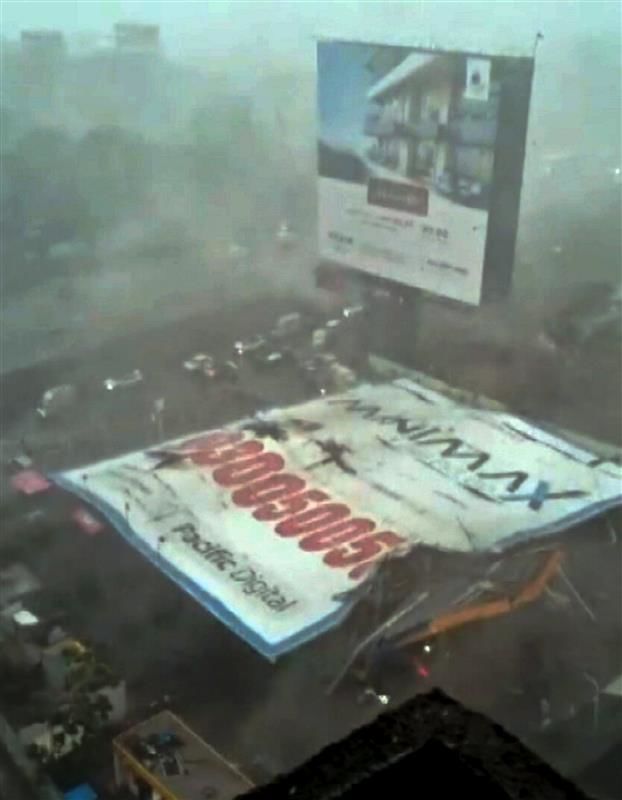
A 100-foot tall billboard was uprooted and fell on a petrol pump due to unseasonal rains, accompanied by a dust storm, at the Cheddanagar Junction in Ghatkopar on Monday. 75 people have been injured and 14 died, according to officials. PTI Photo
Chandigarh, May 15
Severe dust storm has brought both relief and tragedy to Mumbai residents, cooling down the city from an intense heatwave but resulting in deadly consequences.
On Monday, a powerful dust storm caused a large advertising hoarding to collapse in Ghatkopar, killing 14 people and injuring 75 others. This disaster follows a similar event in Delhi last week, where a nighttime dust storm claimed two lives and injured 23 others.
According to reports by Down To Earth, the dust storm originated around Igatpuri, located between Mumbai and Nashik. Initially moving westward, the storm suddenly shifted southwest towards Kalyan and Thane due to the prevailing winds. This unexpected change in direction intensified the storm’s impact on people and property.
So, what is a dust storm
Dust storms, characterised by walls of dust and debris propelled by strong winds, are not uncommon in dry regions in India. They are often triggered by thunderstorms, which generate fierce winds.
According to reports by Down To Earth, KJ Ramesh, former director-general of the India meteorological Department, said that the formation of dust storms is due to the heating of the land over several days.
“Usually, heating of 4-5 days is needed for convection to form which develops into a storm,” Ramesh said. Once formed, these storms are driven by cold and dry “downdraft winds”, aided by gravity.
Climate change and dust storms
Climate change is believed to influence the frequency and intensity of dust storms. Altered atmospheric circulation patterns and increased land degradation contribute to the problem. Rising temperatures and droughts reduce soil moisture, increasing the likelihood and severity of dust storms.
According to reports by the UNESCAP, as temperatures rise, South, South-West and Central Asia, including India, will experience more intense and frequent dust storms.
Residents are advised to stay indoors during dust storms, keep windows and doors closed, and use air purifiers to improve air quality.
Join Whatsapp Channel of The Tribune for latest updates.




























